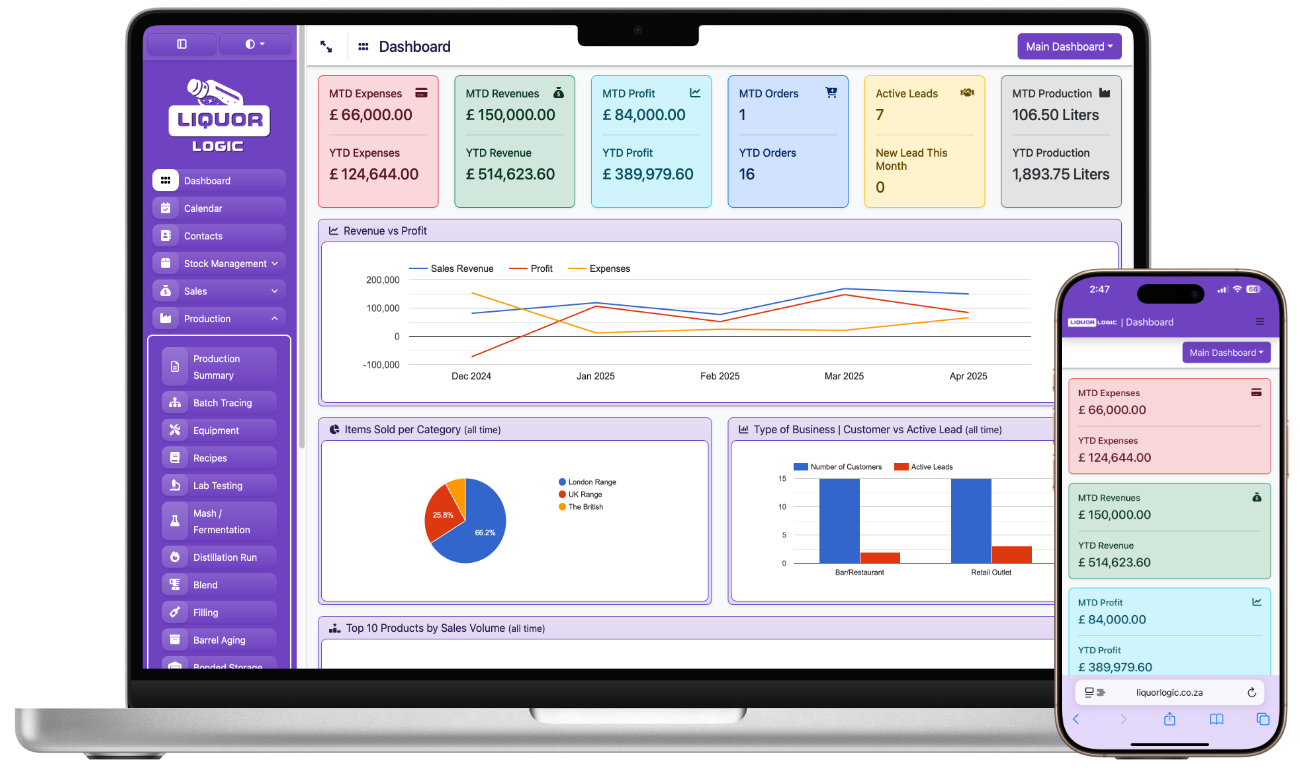Water, Wood, and Waste: Sustainability Pressures on Craft Producers in 2025

Consumers want transparency. Regulators want lower impact. And producers are being forced to do more with less. In 2025, sustainability is no longer a marketing add-on — it’s a production reality. This blog looks at the pressure points and emerging responses across the craft alcohol sector worldwide.
Water, Wood, and Waste: Sustainability Pressures on Craft Producers in 2025
It’s 2025, and the alcohol industry is facing its environmental reckoning. From water use in winemaking to barrel waste in distilling and packaging debris from canned beer, sustainability is no longer optional — it’s expected.
Craft alcohol producers, once lauded for small-batch authenticity, are now under pressure to prove that small doesn't mean irresponsible. Whether it’s from climate-conscious consumers, tightening government regulations, or the sheer cost of waste, the message is clear: operate greener, or fall behind.
1. Water Usage: The Elephant in the Cellar
Water remains the most critical — and most scrutinised — input in alcohol production. Not just in the product itself, but in cleaning, cooling, fermentation, and irrigation.
Key pressure points:
- Wineries: Grape washing and barrel rinsing in water-scarce regions (e.g., parts of South Africa, California, Australia)
- Breweries: Cleaning in place (CIP) systems that use thousands of litres per batch
- Distilleries: Condenser cooling systems that recirculate — or waste — high volumes of water per distillation run
Producers are now expected to track, measure, and reduce water use per litre of finished product. Some are investing in closed-loop systems, greywater reuse, and advanced filtration — but for smaller operations, these upgrades come with a cost barrier.
2. Barrel Reuse and Wood Sourcing
Oak barrels, central to many spirits and wines, are both expensive and resource-intensive. Virgin oak forests are under pressure, and many cooperages are raising prices to reflect sustainable harvesting practices.
In 2025, producers are exploring alternatives:
- Refurbishing old barrels instead of buying new
- Using stainless tanks with oak staves or spirals
- Partnering with wine or bourbon producers for second-fill casks
But consumer perception is nuanced. Some markets demand “virgin oak” status for marketing. Others reward producers for using repurposed casks as part of a waste-reduction narrative. Balancing impact and appeal is becoming an art form.
3. Glass, Labels, and Packaging Waste
Packaging is the most visible form of waste — and increasingly the most questioned. Glass remains dominant, but with high emissions during production and distribution, its eco-footprint is steep. Cans fare better logistically but raise concerns over recyclability and coatings.
Sustainability in packaging now means:
- Lightweight glass bottles to reduce shipping impact
- Paper-based or recycled labels using eco-friendly adhesives
- Recyclable or compostable closures and shrink sleeves
- Minimal packaging — especially in direct-to-consumer and tasting room sales
Some brands now proudly declare packaging weight or recyclability scores on their bottles. In regions like the EU and parts of the US, this is fast becoming a requirement rather than a nice-to-have.
4. Fermentation Footprint: Waste and Energy
The fermentation process isn’t waste-free. Yeast, CO2 emissions, heat, and byproducts like lees or spent grain all need management.
In 2025, sustainability expectations include:
- Spent grain repurposing as animal feed or biofuel input
- CO? capture systems (primarily in larger breweries)
- Heat reclamation for warm water reuse in pre-rinse cycles
Even smaller producers are exploring how to turn their fermentation waste into secondary revenue streams — or at least divert it from landfill.
5. Regulatory Push and Certification Pressure
Globally, regulators are shifting from voluntary guidelines to mandated practices. Europe is leading the way with carbon labeling pilots and eco-score requirements. In South Africa, drought-prone regions have imposed stricter water use audits on wineries and agri-businesses.
What this means for producers:
- More paperwork and data tracking
- Need for sustainability officers or consultants
- Competitive advantage tied to audit readiness and transparency
Certifications like B Corp, Carbon Neutral, or the EU’s Organic and Sustainable Wine labels are also gaining consumer trust — but come with a cost and documentation burden.
6. The Consumer Lens: Greenwashing vs. Authenticity
Today’s consumers are savvy. They can smell greenwashing a mile away. "Eco-friendly" claims without data, vague “sustainable practices” language, or vague packaging messaging can backfire.
Smart producers are leaning into transparency:
- Publishing water usage stats on websites
- Offering refill programs or returnable bottles locally
- Explaining sourcing practices clearly — and honestly
Gen Z and millennial buyers in particular are demanding proof, not just packaging slogans.
Conclusion: Sustainability Isn’t Just a Trend — It’s the Next Barrier to Entry
In 2025, sustainability is the new compliance. It impacts licensing, export eligibility, consumer loyalty, and cost structure. For producers who embrace it — not as a checkbox, but as an operating principle — it opens doors to new markets, partnerships, and efficiencies.
Those who delay or deflect? They risk losing relevance — or worse, access to markets that are shifting to carbon and waste-based import criteria.
Sustainability in craft alcohol isn’t about perfection. It’s about visibility, progress, and owning the impact — barrel by barrel, bottle by bottle, batch by batch.
Back